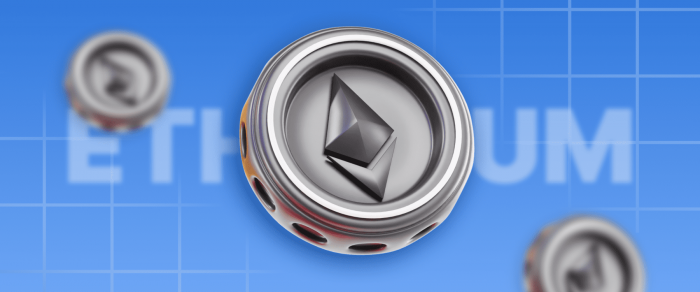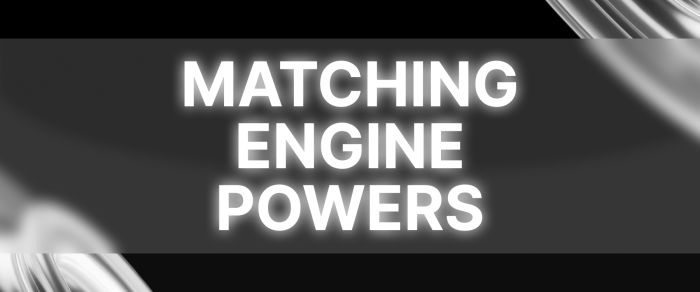Ethereum Dencun Update: What You Should Expect
The second-largest crypto and one of the leading blockchain networks, Ethereum, is responsible for the decentralized operation of a wide range of applications. Usage by an increasing number of individuals raises concerns about its capacity, energy consumption, and associated costs.
To fix these problems, Ethereum 2.0 developers have been actively making changes to improve the network and make it better for everyday use. The article explores the possible future trajectory of ETH and the transformations expected following the Ethereum Dencun update.
Key Takeaways
- Ethereum 2.0 is a series of upgrades to improve the ETH network.
- The Dencun upgrade promises improvements from the Cancun and Deneb upgrades.
- Many sectors, like DeFi and gaming, will benefit from the Dencun upgrade.
Ethereum Evolution
Ethereum, the largest decentralized application ecosystem, has revolutionized the blockchain industry with smart contracts and DeFi. However, its rapid adoption has led to infrastructure strain, network congestion, and high energy consumption.
The Ethereum Foundation has launched the Ethereum 2.0 roadmap to make the network more sustainable, scalable, efficient, and ready for real-world applications.
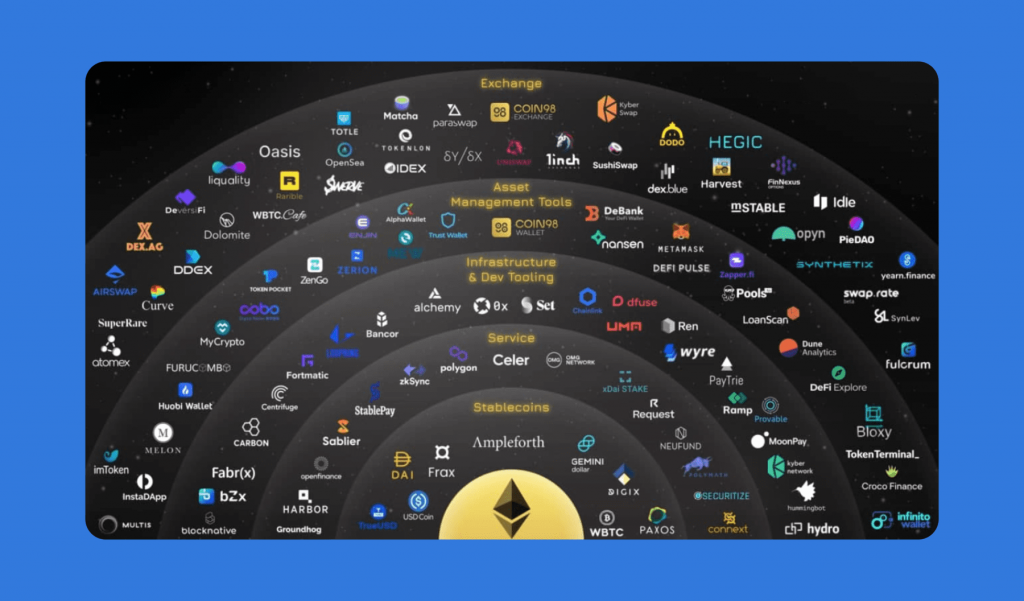
Ethereum update roadmap is a set of intentions aimed at improving its scalability, security, and sustainability, with some upgrades expected within six months and others likely to take 5 to 10 years. The timing of each upgrade is complicated due to parallel work and different speeds, and the urgency of an upgrade can change over time.
Ethereum 2.0: Detailed Breakdown
Ethereum 2.0 is a series of upgrades aimed at improving the ETH network’s performance. It began with the Beacon Chain in December 2020, introducing a parallel blockchain operating on a PoS protocol, while the ETH Mainnet continued to rely on PoW for security. In 2021, several upgrades were introduced, which resulted in Ethereum’s complete transition to PoS.
In April 2023, the Shanghai upgrade allowed users to withdraw staked ETH, simplifying stake management and increasing liquidity in the crypto market.
In September 2023, Ethereum launched Holešky, a new testing network supporting 1.4 million validators, as a foundation for the ETH Dencun upgrade. This upgrade aims to make the network faster, more secure, and more scalable.
Ethereum Danksharding
Danksharding is the third stage of Ethereum 2.0, focusing on horizontal database scaling. It distributes the responsibility of managing vast data generated by Layer-2 rollups, using distributed data sampling across blobs to make ETH more scalable, decreasing data storage costs, and empowering anyone to become a validator. This increased accessibility leads to greater decentralization and enhanced security.
Proto-Danksharding, or EIP-4844, is the first step to achieving full Danksharding, addressing ETH’s scalability issues by expanding transaction volume and increasing block size by up to 2 MB. This introduces temporary data blobs that can be seamlessly transmitted and linked to blocks, ensuring automatic deletion within a set time frame.
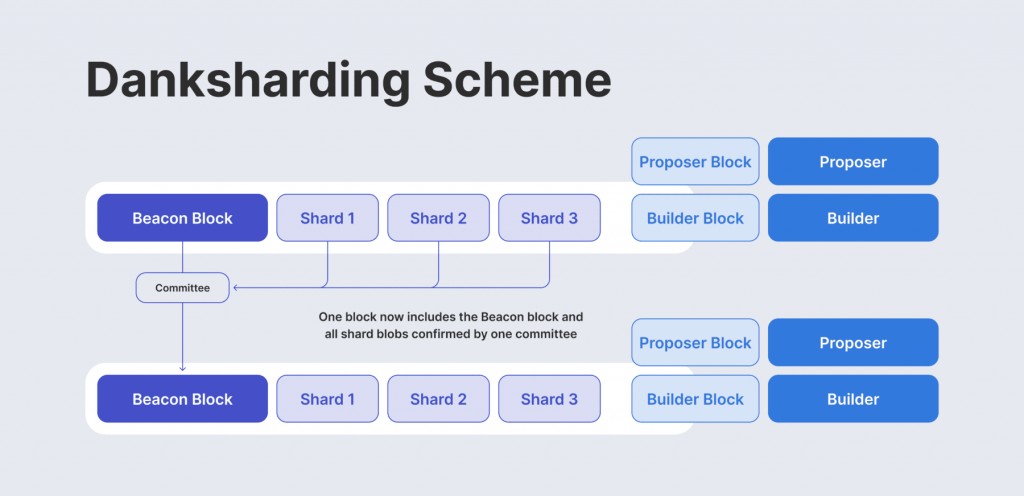
Full Danksharding, the ultimate evolution of rollup scaling, expands blobs attached to blocks from 1 to 64, enabling massive storage space for rollups and making millions of transactions per second a tangible reality on the ETH network.
Understanding Ethereum Dencun Upgrade
The Dencun Upgrade, which went live on March 13, 2024, is one of the Ethereum forks aimed at improving the network’s scalability, security, and usability. It incorporates key Ethereum Improvement Proposals (EIPs) like EIP-4844 for proto-danksharding, enhancing network efficiency, and lowering transaction costs.
The upgrade builds on previous updates like the Shanghai upgrade, aiming to fortify the infrastructure for dApps and enhance the ETH user experience. The upgrade combines the terms “Cancun” and “Deneb” to describe two key improvements in the execution and consensus layers.
The Dencun Upgrade seeks to integrate advancements from the Ethereum Cancun upgrade on the execution layer with those from the Deneb upgrade on the consensus layer, employing a dual approach to refine Ethereum’s protocol rules and block validation procedures.
Ethereum’s Dencun upgrade is part of ‘The Surge,’ a series of upgrades including Merge, Surge, Scourge, Verge, Purge, and Splurge. The Merge transitioned from PoW to PoS, while Surge introduced scalability and data sharding. Scourge improved censorship resistance, decentralization, and protocol risks. Verge simplified block verification, and Purge reduced computational costs. The Splurge included additional upgrades not covered in the previous categories.

Ethereum’s Dencun upgrade consists of several Ethereum Improvement Proposals (EIPs):
- EIP-4844, which increases scalability;
- EIP-1153, which lowers on-chain data storage costs;
- EIP-4788, which enhances security and functionality;
- EIP-5656, which improves EVM performance;
- EIP-6780, which enhances network security.
EIP 4844 is the main focus. It presents Proto-Danksharding, which reduces L2 transaction costs by creating more block space and carrying extra data. It breaks down transactions into essential and non-essential data, increasing transaction handling.
This separation could potentially lower gas fees for users interacting with Layer 2 scaling solutions built on ETH, increasing transaction throughput and making it more attractive to developers and users.
The Dencun upgrade aims to increase ETH transaction speed from 30 TPS to 100,000, indicating the ETH blockchain progress towards the ‘The Surge’ phase of its tiered roadmap.
Benefits of Dencun Update
The Dencun upgrade is a major event for the ETH community. It is expected to enhance the ETH ecosystem significantly, improving user experience and attracting a wider range of projects. Among the key benefits of the upcoming upgrade are the following.
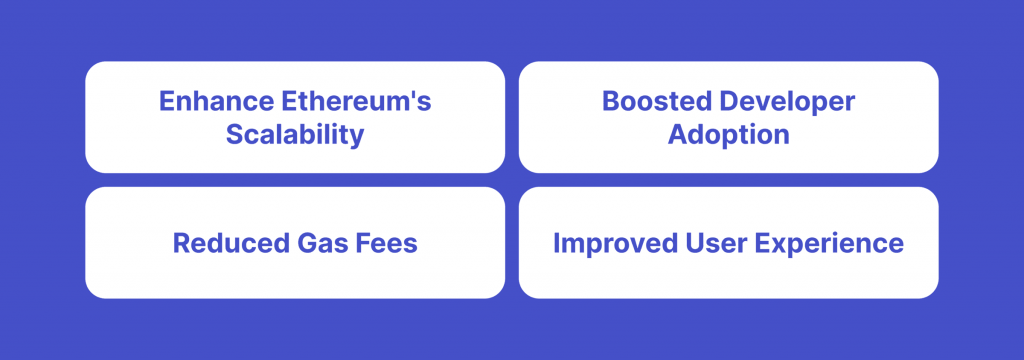
Enhance Ethereum’s Scalability
The storage of non-essential data outside the main chain enhances transaction throughput, enabling ETH to handle larger transactions without compromising security or decentralization, resembling more traffic lanes.
Boosted Developer Adoption
Dencun’s improved scalability and lower costs are expected to attract more developers to create innovative ETH apps, enhancing the ecosystem with a wider variety of dApps.
Reduced Gas Fees
Dencun’s proto-danksharding is expected to significantly reduce gas fees for Layer 2 transactions, making ETH more accessible to a wider user base and enabling microtransactions and play-to-earn games.
Improved User Experience
Lower gas fees and faster transaction processing times on ETH will improve the user experience when interacting with dApps and other blockchain-based applications, reducing wait times and transaction fees.
Who Exactly Will Benefit from The Ethereum Update
Dencun’s reduced gas fees and enhanced scalability will significantly influence various ETH ecosystem projects, promoting innovation and wider adoption. Let’s take a look at the sectors that will be ahead of the game.
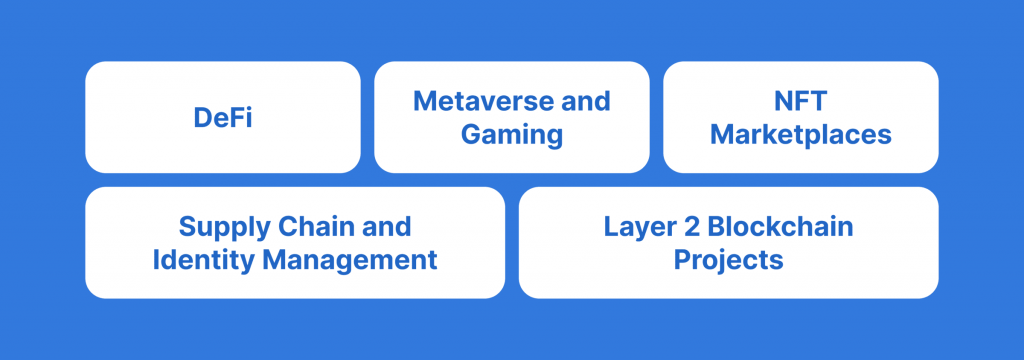
DeFi
The latest Ethereum update can reduce gas fees that have hindered DeFi protocols, making DeFi applications more accessible and cost-effective. This could lead to increased adoption of lending protocols like Aave or Compound, promoting financial inclusion and allowing individuals worldwide to participate in a global, permissionless finance system.
Metaverse And Gaming
Dencun can significantly improve the user experience of blockchain-based games and metaverse experiences by reducing transaction costs and latency.
Projects like Decentraland can leverage this to create smoother, more immersive gaming experiences, attract a wider player base, and accelerate the growth of the play-to-earn gaming model. Additionally, Dencun can benefit metaverse projects aiming to build virtual worlds with rich economies.
NFT Marketplaces
Dencun’s lower fees may encourage creators and collectors to use ETH-based NFT marketplaces like OpenSea or Rarible, leading to increased NFT activity and wider adoption of the technology, fostering a thriving marketplace for digital art, collectibles, and virtual asset ownership.
Supply Chain And Identity Management
Blockchain tech provides a secure way to track goods in supply chains, but scalability limitations have hindered their adoption. Dencun’s improved scalability allows for real-time tracking of goods and enhanced efficiency. It also enhances identity management, allowing users to control their digital identities securely across various platforms and applications.
Layer 2 Blockchain Projects
Dencun’s arrival could significantly benefit Layer 2 scaling solutions like Polygon (MATIC), Optimism (OP), and Immutable X (IMX). Polygon’s lower gas fees could attract more users and developers, potentially increasing demand for MATIC tokens.
Optimism’s high active users and total value locked could also boost its adoption. Immutable X, a Layer 2 solution specifically designed for NFT trading, could benefit from Dencun’s lower gas fees and improved user experience, potentially driving demand for the IMX token.
Final Thoughts
The Ethereum Dencun upgrade, which went live in March 2024, is crucial for the ETH network to manage unsettled issues not addressed by the Shanghai update. It is developed to improve code changes, cross-chain communication, data storage, gas cost, security, and transaction speed.
The currency is set to thrive post-Ethereum update 2024 due to improved security, sustainability, and potential for expansion. The ETH 2.0 plan and Danksharding updates will bring in developers, users, and traders.
